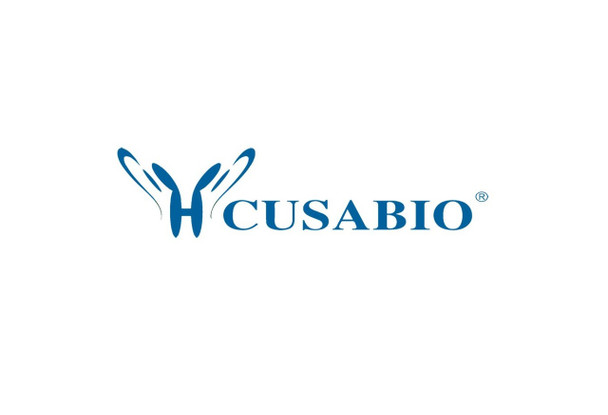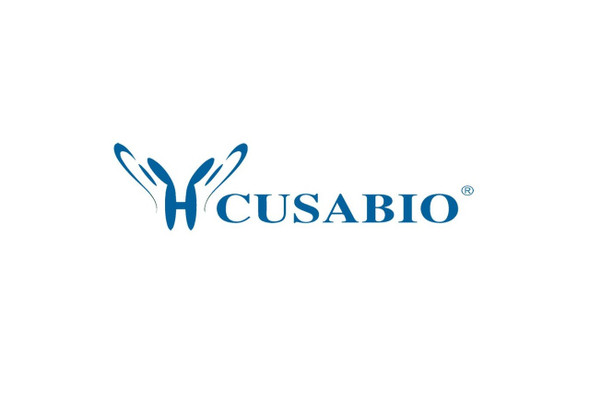Cusabio Canis lupus familiaris Recombinants
Recombinant Dog Epididymal secretory protein E1 (NPC2) | CSB-EP634688DOa2
- SKU:
- CSB-EP634688DOa2
- Availability:
- 13 - 23 Working Days
Description
Recombinant Dog Epididymal secretory protein E1 (NPC2) | CSB-EP634688DOa2 | Cusabio
Alternative Name(s): Niemann Pick type C2 protein homolog cE1
Gene Names: NPC2
Research Areas: Others
Organism: Canis lupus familiaris (Dog) (Canis familiaris)
AA Sequence: VHFKDCGSAVGVIKELNVNPCPAQPCKLHKGQSYSVNVTFTSNIPSQSSKAVVHGIVLGVAVPFPIPEADGCKSGINCPIQKDKTYSYLNKLPVKNEYPSIKLVVQWMLLGDNNQHLFCWEIPVQIEG
Source: E.coli
Tag Info: N-terminal 6xHis-SUMO-tagged
Expression Region: 22-149aa
Sequence Info: Full Length of Mature Protein
MW: 30 kDa
Purity: Greater than 90% as determined by SDS-PAGE.
Relevance: Intracellular cholesterol transporter which acts in concert with NPC1 and plays an important role in the egress of cholesterol from the endosomal/lysosomal compartment. Both NPC1 and NPC2 function as the cellular 'tag team duo' (TTD) to catalyze the mobilization of cholesterol within the multivesicular environment of the late endosome (LE) to effect egress through the limiting bilayer of the LE. NPC2 binds unesterified cholesterol that has been released from LDLs in the lumen of the late endosomes/lysosomes and transfers it to the cholesterol-binding pocket of the N-terminal domain of NPC1. Cholesterol binds to NPC1 with the hydroxyl group buried in the binding pocket and is exported from the limiting membrane of late endosomes/ lysosomes to the ER and plasma membrane by an unknown mechanism. The secreted form of NCP2 regulates biliary cholesterol secretion via stimulation of ABCG5/ABCG8-mediated cholesterol transport
Reference: "Gene expression in the dog epididymis: a model for human epididymal function."Ellerbrock K., Pera I., Hartung S., Ivell R.Int. J. Androl. 17:314-323(1994)
Storage: The shelf life is related to many factors, storage state, buffer ingredients, storage temperature and the stability of the protein itself. Generally, the shelf life of liquid form is 6 months at -20?/-80?. The shelf life of lyophilized form is 12 months at -20?/-80?.
Notes: Repeated freezing and thawing is not recommended. Store working aliquots at 4? for up to one week.
Function: Intracellular cholesterol transporter which acts in concert with NPC1 and plays an important role in the egress of cholesterol from the endosomal/lysosomal compartment. Both NPC1 and NPC2 function as the cellular 'tag team duo' (TTD) to catalyze the mobilization of cholesterol within the multivesicular environment of the late endosome (LE) to effect egress through the limiting bilayer of the LE. NPC2 binds unesterified cholesterol that has been released from LDLs in the lumen of the late endosomes/lysosomes and transfers it to the cholesterol-binding pocket of the N-terminal domain of NPC1. Cholesterol binds to NPC1 with the hydroxyl group buried in the binding pocket and is exported from the limiting membrane of late endosomes/ lysosomes to the ER and plasma membrane by an unknown mechanism. The secreted form of NCP2 regulates biliary cholesterol secretion via stimulation of ABCG5/ABCG8-mediated cholesterol transport (By similarity).
Involvement in disease:
Subcellular Location: Secreted, Endoplasmic reticulum, Lysosome
Protein Families: NPC2 family
Tissue Specificity: Epididymis. High levels are found in the caput and corpus regions. Weaker levels in the distal cauda and in the efferent ducts.
Paythway:
Form: Liquid or Lyophilized powder
Buffer: If the delivery form is liquid, the default storage buffer is Tris/PBS-based buffer, 5%-50% glycerol. If the delivery form is lyophilized powder, the buffer before lyophilization is Tris/PBS-based buffer, 6% Trehalose, pH 8.0.
Reconstitution: We recommend that this vial be briefly centrifuged prior to opening to bring the contents to the bottom. Please reconstitute protein in deionized sterile water to a concentration of 0.1-1.0 mg/mL.We recommend to add 5-50% of glycerol (final concentration) and aliquot for long-term storage at -20?/-80?. Our default final concentration of glycerol is 50%. Customers could use it as reference.
Uniprot ID: Q28895
HGNC Database Link: N/A
UniGene Database Link: UniGene
KEGG Database Link: N/A
STRING Database Link: STRING
OMIM Database Link: N/A









